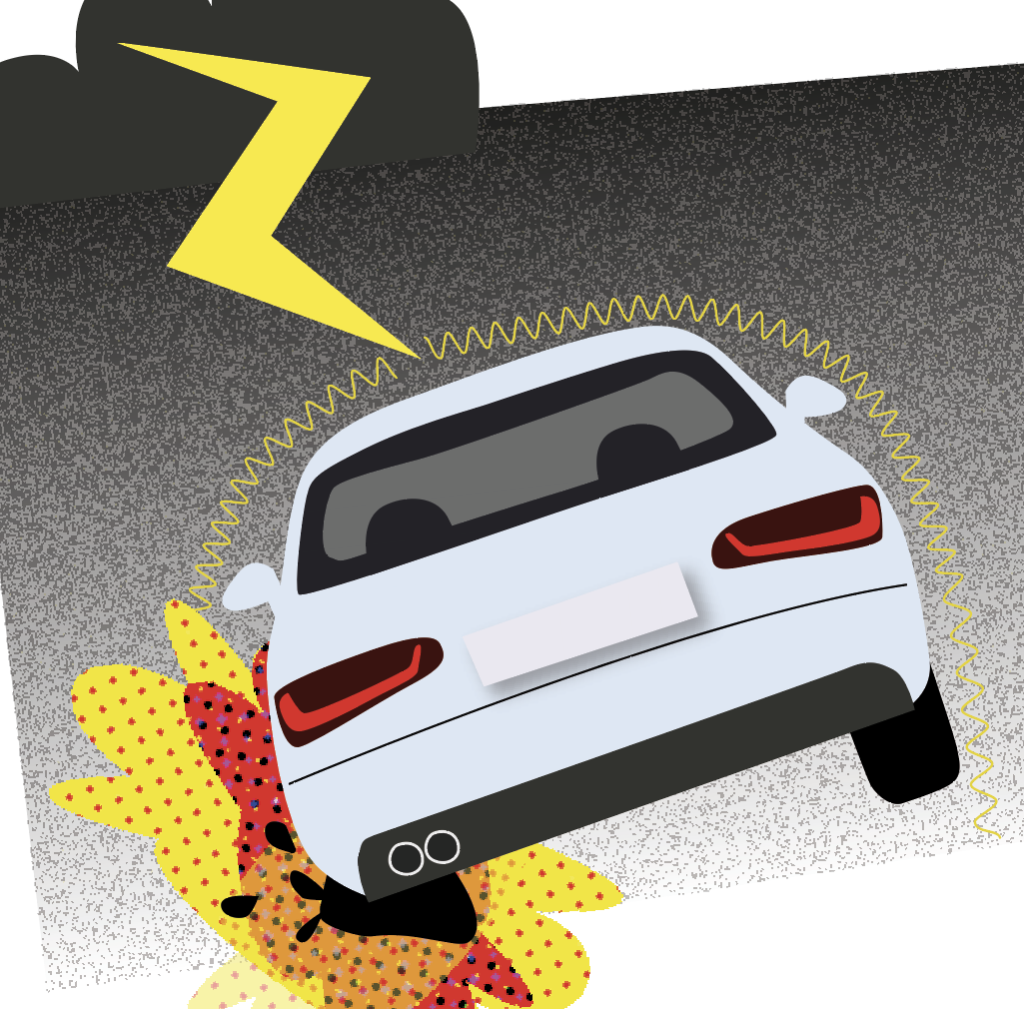The likelihood of a car being struck by lightning during a thunderstorm is extremely low, but when it happens, unusual and unpredictable outcomes unfold. Normally, a cloud-to-vehicle lightning bolt will strike either the vehicle antenna or the roofline – although direct hits on tire-wheel assemblies have been reported. The lightning strike could destroy one or more tires, which sometimes ignite or explode as the electric charge passes to the ground. However, vehicle occupants remain safe since automobiles (as well as trains and airplanes) are essentially Faraday cages that protect travelers by safely passing the lightning’s charge through the vehicle’s outer metal shell. Contacting a high-voltage power line with the extended boom of a backhoe, for example, can also cause unexpected flat tires while leaving the operator safe in the cab. Conversely, non-metallic composite outer bodies on any vehicle offer no intrinsic protection.
A more common, but somewhat related, problem is frictional slipping and sliding within the tire contact patch during normal highway service, creating an electrostatic charge known as triboelectricity. This build-up of static charge on the tires is normally bled off by grounding to a contacting body – usually the road surface. Without proper grounding, the charge accumulates and erratically discharges, causing radio interference or producing an electric shock felt by passengers entering or exiting (for example, in and out of buses). This issue came to the fore during the late 1930s when pushbutton dashboard radios became a standard feature on US automobiles, and pneumatic tires contained a low-conductivity carbon black produced by the channel process. In response, research physicists at Firestone and US Rubber (later Uniroyal) filed patents in 1940 that explained and solved the static discharge problem by adding a strip of conducting rubber to the tire sidewall or interior structure. For reasons of safety during World War II, aircraft tires were manufactured with anti-static tread compounds to mitigate the risk of a spark discharge during refueling; similar conductive compounds were specified for solid rubber and pneumatic tires used in munitions factories.
Rubber compounds featuring channel black reinforcing filler were used in US tires until the mid-1950s, when it was gradually replaced by an improved carbon black produced by the oil furnace process; this better performing black was also more electrically conductive. As a consequence, static discharge from tires slowly became a non-issue for the motoring public. However, the problem resurfaced in the early 1990s with the introduction of low rolling resistance tires featuring silica-rich tread compounds. Rubber, per se, is an insulating material, but with the addition of carbon black, electrical resistivity is lowered and conductivity increases – the amount depending on the type and quantity of carbon black. On the other hand, silica compounds tend to behave more like insulators since silica doesn’t conduct electricity. Specifically, some owners of 1994 Honda Accords registered complaints of static electricity shocks when passing coins to toll-booth collectors. These vehicles were the first in the USA to feature low rolling resistance Michelin tires containing silica. The shocks were more frequent on days with low humidity and high temperatures. The problem was solved, in some cases, by inserting a narrow strip of conductive rubber (a so-called antenna or chimney) in the center of the unvulcanized silica tread stock during the manufacturing process. For decades, gasoline tank trucks have solved a related problem by attaching a drag chain to safely ground the vehicle chassis to the roadway – preventing the accumulation of static electricity on the tires.
 The most electrically conductive type of carbon is produced by the acetylene process and, while used in dry cell batteries, it remains unsuitable for tread compounds due to its poor physical properties – especially abrasion resistance. Conductivity is usually not measured in carbon black itself, but rather in the compound containing the black. Compound conductivity increases not only with the amount of reinforcing filler, but also with its specific surface area (smaller particles are better) and increasing structure. Tread stocks typically contain 30-70phr of low surface area, high structure black – while low rolling resistance PCR tires featuring silica treads can contain up to 120phr; thus, the need for an antenna to discharge static build-up in silica-rich tires.
The most electrically conductive type of carbon is produced by the acetylene process and, while used in dry cell batteries, it remains unsuitable for tread compounds due to its poor physical properties – especially abrasion resistance. Conductivity is usually not measured in carbon black itself, but rather in the compound containing the black. Compound conductivity increases not only with the amount of reinforcing filler, but also with its specific surface area (smaller particles are better) and increasing structure. Tread stocks typically contain 30-70phr of low surface area, high structure black – while low rolling resistance PCR tires featuring silica treads can contain up to 120phr; thus, the need for an antenna to discharge static build-up in silica-rich tires.
In the future, is it possible that conducting forms of allotropic carbon (including graphite, graphene or carbon nanotubes) could be an ingredient in rubber formulations that harvest electromechanical energy generated by electrified tires?



